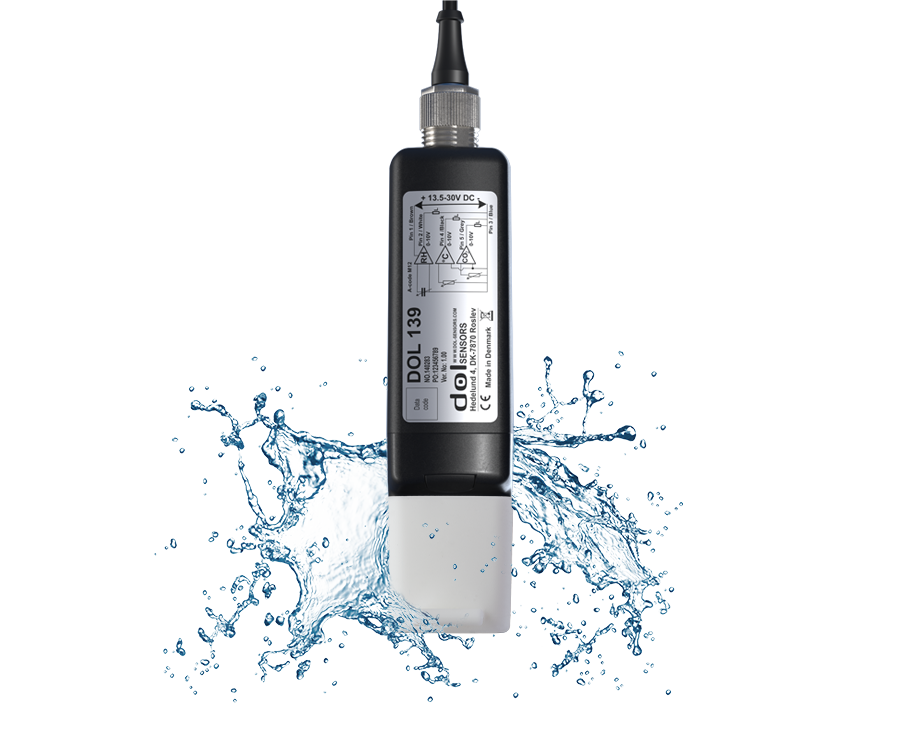Waterproof CO2 Sensor
In the agricultural industry, CO2 or carbon dioxide plays a vital role, since it affects the animal welfare and thus the performance of the production. This is why CO2 sensors are crusial instruments in livestock production.
CO2 sensors measure the level of carbon dioxide in the livestock house and combined with at farm controller it can help controlling the ventilation system automatically, ensuring optimum climate conditions for the animals.
Carbon dioxide (CO2) sensors are used in a variety of applications, including indoor air quality monitoring, building automation systems, and greenhouse gas emissions tracking. However, in some environments, such as marine, agricultural, and outdoor settings, it is crucial for CO2 sensors to be waterproof to ensure accurate and reliable measurements. In this article, we will explore the importance of CO2 sensors being waterproof.

Firstly, CO2 sensors that are exposed to moisture or water can suffer from damage to their sensitive components, leading to inaccurate readings or even complete failure. This is because moisture can corrode or short-circuit the sensors’ electrical connections and cause rust or other types of damage. Therefore, by making CO2 sensors waterproof, they are protected from water damage, ensuring the longevity and accuracy of the sensor. In livestock houses, high-pressure cleaning can damage the sensor, if the sensor is not waterproof.
Secondly, waterproof CO2 sensors are essential in applications where they are exposed to harsh outdoor conditions, such as marine environments. In these environments, CO2 sensors are typically used in the measurement of dissolved CO2 in seawater. However, seawater can cause corrosion or damage to non-waterproof sensors, leading to incorrect measurements or sensor failure. By using a waterproof CO2 sensor, it is possible to obtain accurate and reliable data even in such harsh environments.
Thirdly, waterproof CO2 sensors are critical in applications where the sensor is located in areas that are susceptible to flooding, high-pressure cleaning, or high levels of humidity. For example, in indoor air quality monitoring systems in humid areas, non-waterproof sensors can be affected by the high moisture content in the air. This can lead to incorrect measurements or failure of the sensor. By using a waterproof CO2 sensor, the accuracy and reliability of the sensor are ensured even in such high-moisture environments.
Finally, waterproof CO2 sensors are essential for safety purposes in some applications. For example, in submarines or other underwater vehicles, the CO2 levels can quickly rise to dangerous levels. By using a waterproof CO2 sensor, the accuracy and reliability of the sensor are ensured, enabling the crew to monitor and control the CO2 levels and prevent any health risks or accidents.
The importance of CO2 sensors being waterproof cannot be overstated. In applications where the sensor is exposed to water or high levels of humidity, a waterproof sensor ensures the accuracy and reliability of the sensor’s measurements. Furthermore, waterproof CO2 sensors are essential in applications where safety is a concern, such as in submarines or other underwater vehicles. By ensuring the sensor is waterproof, the longevity, accuracy, and safety of the sensor are guaranteed, making it an essential requirement for CO2 sensors used in harsh environments.
DOL 119 CO2 Sensor and DOL 139 Temperature, Humidity and CO2 Sensor both have protection caps mounted at the wire to make them waterproof CO2 sensors. Furthermore, both sensors are IP 67 protected against water and dust.
Downloads
Head Office
dol-sensors A/S
Agro Food Park 15
8200 Aarhus N